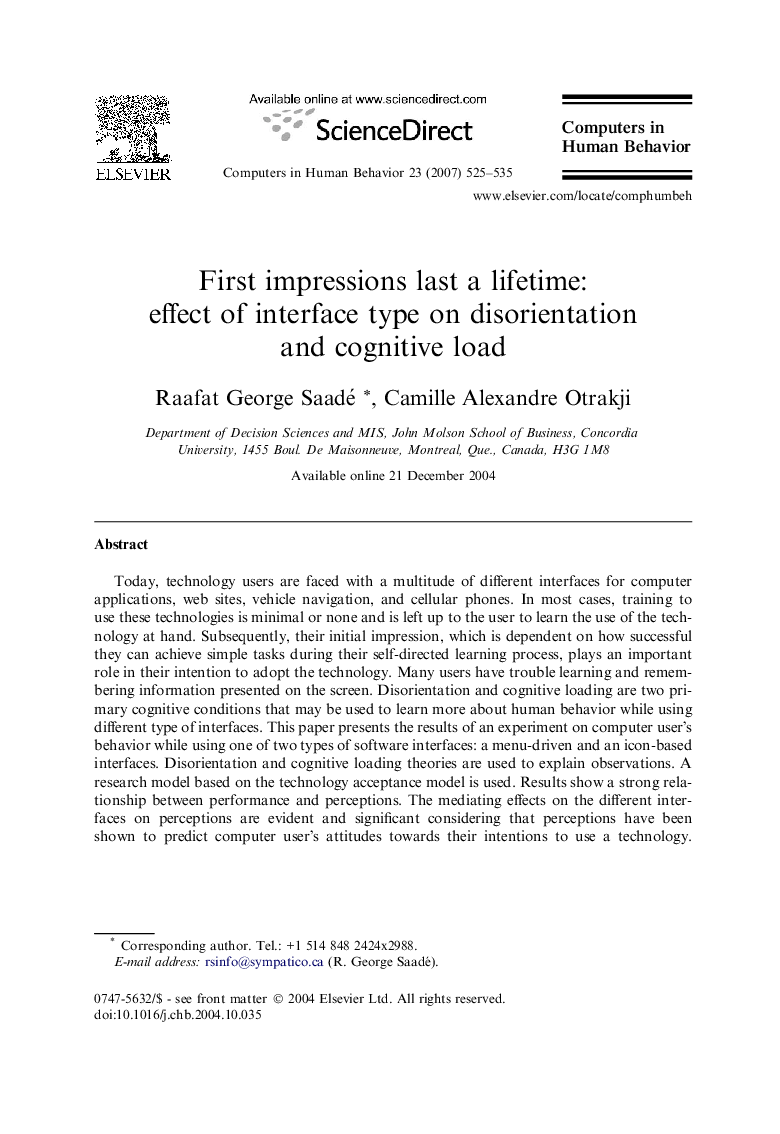| Article ID | Journal | Published Year | Pages | File Type |
|---|---|---|---|---|
| 352352 | Computers in Human Behavior | 2007 | 11 Pages |
Today, technology users are faced with a multitude of different interfaces for computer applications, web sites, vehicle navigation, and cellular phones. In most cases, training to use these technologies is minimal or none and is left up to the user to learn the use of the technology at hand. Subsequently, their initial impression, which is dependent on how successful they can achieve simple tasks during their self-directed learning process, plays an important role in their intention to adopt the technology. Many users have trouble learning and remembering information presented on the screen. Disorientation and cognitive loading are two primary cognitive conditions that may be used to learn more about human behavior while using different type of interfaces. This paper presents the results of an experiment on computer user’s behavior while using one of two types of software interfaces: a menu-driven and an icon-based interfaces. Disorientation and cognitive loading theories are used to explain observations. A research model based on the technology acceptance model is used. Results show a strong relationship between performance and perceptions. The mediating effects on the different interfaces on perceptions are evident and significant considering that perceptions have been shown to predict computer user’s attitudes towards their intentions to use a technology. The experiment demonstrated the need to consider standard consistent interfaces when training is not provided.
